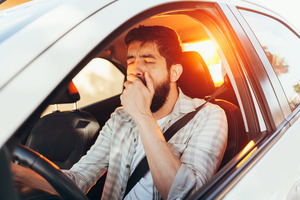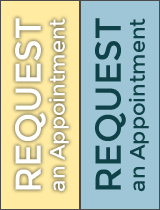Drowsiness and Driving: A Dangerous Combination
January 14, 2024

Sleep apnea often leaves you feeling extremely tired throughout the day. This can be more dangerous than you realize, especially if you’re getting on the road. Driving while drowsy could easily lead to an accident, thus putting yourself and others in harm’s way. Here’s a look at what makes drowsy driving so unsafe and how you can help yourself stay alert behind the wheel.
What Exactly Makes Drowsy Driving So Dangerous?
It has been estimated that roughly 21% of car crashes that result in deaths can be linked to a drowsy driver. There are several reasons why driving while tired can be especially hazardous:
- Drowsiness makes it more difficult to pay attention to potential obstacles while you’re driving.
- Being tired can affect your reaction time, which can make all the difference if you suddenly need to hit the brakes or swerve out of the way.
- When you’re tired, you’re less likely to make good decisions. As such, you may be more prone to taking unnecessary risks on the road.
- If you’re especially drowsy, you may even end up drifting off. Needless to say, falling asleep at the wheel even for a short amount of time can easily result in disaster.
- The National Highway Traffic Safety Administration has found that drowsy driving can be just as dangerous as drunk driving, if not more so.
What Can You Do About Drowsy Driving?
To keep yourself and others safe, you should take whatever steps you can to minimize your chances of driving while drowsy. Sometimes it could be as simple as adjusting your sleeping habits; getting 7 to 9 hours of slumber on a nightly basis could go a long way toward helping you stay as alert as possible when you’re awake.
However, if your drowsiness is linked to sleep apnea – which can disrupt your sleep multiple times throughout the night – then going to bed earlier may not be enough on its own. To get the quality rest you need, you should have your sleep apnea diagnosed and treated as soon as possible. Don’t hesitate to get in touch with your doctor or a sleep dentist to discuss your concerns.
Sleep apnea is often treated with a CPAP machine, but many patients find this option too noisy or uncomfortable. In some cases, you may qualify for a personalized oral appliance. You can wear this device when you go to bed so that it can reposition your jaw, thus keeping your airway clear and reducing the risk of your breathing being interrupted while you’re asleep.
Drowsy driving is definitely not a habit you want to get into, as it can easily have fatal consequences. Take whatever steps are necessary to make sure that you’re well-rested so that you can stay safe whenever you’re on the road.
About the Author
Dr. Deborah A. Romack went to the Baylor College of Dentistry and graduated with honors in 1998. She has completed multiple courses about obstructive sleep apnea and snoring, and she is a proud member of the American Academy of Dental Sleep Medicine. She can help patients with sleep-disordered breathing improve the quality of their slumber with personalized oral appliances. To schedule a consultation with Dr. Romack at Weatherford Dental Sleep Medicine, visit her website or call (817) 594-3806.
No Comments
No comments yet.
RSS feed for comments on this post.
Sorry, the comment form is closed at this time.

